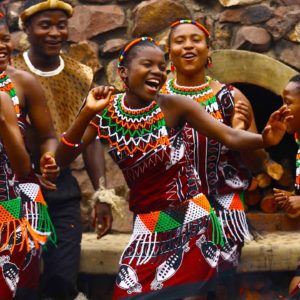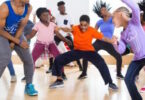If everything in life was the same, it would be truly boring. You should experience different cultures, food, and traditions like African dances. Also if you have African heritage running through your blood you should embrace it and if you don’t you should try it.
History of Afro Dance
Dancing has come a long way and when it comes to African dances, it is not only interesting and fun but there is a meaning and a story behind each one.
What is better than Dressing up and dancing to the rhythm of the music, especially when there is so much to choose from? All the different outfits, styles, musical instruments that are used differs from culture to culture and even from tribe to tribe.
Dancing is not only for celebration purposes but for most of us, it is. Other cultures around the world and especially in Africa do meaningful dances of a rite of passage, war, and even a ritual dance.
Most of us dance today because we are happy we got a little more on our paycheck or that we are happy and we are enjoying life with our family or friends. But we are actually expressing our emotions through dance and also socializing without us even noticing it.
Courtship
Attracting the attention of the other sexes. These days are really different from back in the olden days. Guys want to pump up their car stereos for women to notice them and some women wear high heels for guys to notice them. Why not just dance and have fun?
Almost every African culture has a dance for courtship “To attract the opposite sexes” and no I’m not talking about twerking, but it can include a similar dance move to it. It is not only for seduction purposes; it is the way the dancer’s body communicates to our primal instinct.

The very popular Courtship dance in Nigeria is the Wodaabe tribe, where they wear paint on their faces made from natural resources, and the women of the same and different tribes and or settlements sit in front of the men.
The men who are hoping to win over their first or even third wife stand in line and swing their arms. They then smile to show off their teeth and roll their eyes to gain sexual appeal from the women in front of them while wearing colorful attire.
War and Intimidation
There are a lot of tribes that have a dance that they perform to intimidate their enemies from afar. They then do movements like stomping their feet, singing, or yelling. They do this to put fear in the deepest corners of their enemies and to build their team spirits by boosting morale.
By dancing before a war takes place already puts the dancers into an advantage. This is because they become more supple and their moods are lifted unlike their enemies that they will fight.
The War dances are not only limited to being danced before the war takes place and not every war has a dance being performed beforehand. They also perform the War dance in celebrations and for ritual purposes to thank and remember their ancestors that performed the same dance years before them.
A very popular War dance is called Umzansi, from the Zulu tribe in Southern Africa. Where there is a big drum being beaten as the Zulu men stomp their feet on the ground, dancing and performing the same movements.
The men come together dressed in traditional Zulu clothing, aprons, and headbands that are made from animal skin. The Zulu royalties wear leopard skin and they are the only ones that are allowed to wear the leopard skin.
Rite of Passage
Most cultures have a coming of age tradition or ceremony. The Zulu kingdom in Southern Africa has a dance called, Ukusina, which is performed by a woman when she is at the age to get married.
The Zulu women are usually bare breasted with colorful beads hanging over their breast in a form of a neckless. Even their skirts, bracelets, and ankle bracelets are made from colorful beads.
They perform the Ukusina dance in front of their families, as they sing traditional songs while wearing beads attire that is unique to the woman wearing it.
Fertility and Ritual

In Western Africa, a dance is being performed that is known as Kakilambe. It is being performed by the Baga people of Guinea or in Mali.
It is a dance that appears once in every seven years in a tribe or a settlement. It is a symbol of the celebration of the growth of crops also in the birth of children and life as well. The dance will begin slowly as people ask the prophet questions about life, the health of the community, and if children were to be born. And as the answers are being given the dance becomes faster and more exciting.
The women wear ropes made from hay around their hips and the prophet wears a mask made from wood with hay rope as hair.
Celebration and Weddings
Who doesn’t like to dance at a wedding? We all love it and embrace the coupling of our loved ones and we rejoice in their happiness.
When the Xhosas in Southern Africa get married, the traditional healers or also known as Sangomas perform a dance routine for the newlyweds and their families that are known as Ukuxhentsa.
Ukuxhentsa is a dance of pride for their families with slow music and where the Sangomas wear their traditional outfits and stomp their bare feet to the beat of the drums. While wearing beautiful dresses plain in color but with some flare to it as it is decorated with stripes.
Modern Dancing with Afro Flavour

Today there are a lot of dance forms and styles that include afro dancing by incorporating some of the dance moves in their style.
A perfect example is a well-known dance move that is known as twerking. We all know what twerking is, but do you know where it came from? It originally comes from the Ivory Coast; the dance is known as Mapouka also known as the “dance from behind”.
Mapouka is a dance where women in the tribe face away from the crowd and bend over and shake their behind from side to side. There are a lot of afro dances that are incorporated into modern dance forms that you will barely even notice.
Explore the African dance culture, it will surely keep you captivated and might just take your breath away.
Afrikagora Magazine









